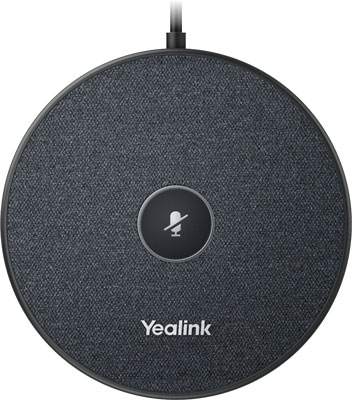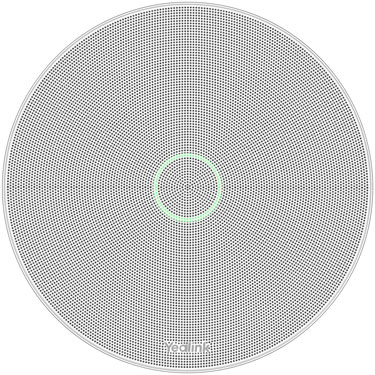Designing a professional video conferencing system for a large conference room can be tough.
You want a system with excellent camera coverage so every face can be seen. You also want a system with excellent microphone coverage so every voice can be heard. And you want all your devices to be simple to manage, to work with your chosen platform(s), and so on, and so on.
Two of the most popular video conferencing platforms are Microsoft Teams and Zoom. There’s a wide array of equipment for both platforms, some with better audio quality than others — particularly when it comes to large rooms.
Over the pandemic, many businesses purchased webcams like a Meeting Owl or Logitech C920. While such webcams might be good for use in small rooms, they don’t cut it for a large, professional conference room. The webcam’s video might be passable — but the audio quality isn’t.
Over our many years of helping customers to find the best solution for their specific problem, we’ve had many customers ask: how do you get better sound quality in large video conferencing rooms?
In this blog, we’re focusing on upgrading audio quality in large conference rooms with Video Conferencing Microphones.
Let’s get into it.

Better Sound Quality Means Better Video Calls
The first thing you can do to improve audio quality in large conference rooms has nothing to do with business technology. It has to do with interior design.
You know how when you first enter a new home or new apartment and it is echoey as can be — and then you bring in your furniture, wall hangings, rugs, and so on. The echoes go away. It’s the same in a conference room, especially in a large conference room.
Echo is one of the primary villains when it comes to audio quality. Consider ceiling-mounted baffles or wall-mounted acoustic panels, which serve to break up sound waves and thereby reduce echo. If the room has hardwood floors, use rugs to absorb sound waves. Place plants and trees in corners, which not only make the room more pleasant, but also break up sound waves.
So now you’ve figured out the interior design of your conference room. It’s time for the tech.

There has been great progress in background noise reduction, echo cancellation, and voice enhancing technologies for conference room microphones. When setting up your large conference room, consider professional-grade microphones backed by these technologies.
For example, Yealink Noise Proof combines two features to greatly reduce distractions on a video call. Noise Suppression, well, suppresses noises like the wrinkling of paper, the sound of typing, and coughing. Smart Noise Block intelligently mutes microphones when no one is speaking to eliminate any transmission of noise at all. Similarly, Poly Acoustic Fence intelligently determines the distance that sound has travelled to reach a microphone. It then eliminates any sounds beyond a given distance, effectively creating a “fence” around your conversation.
There are two ways to think about what large means in the context of a conference room: the size of the room and the number of people in a group. Both meanings present problems.
With microphones, you have to consider two things: voice pickup range and directionality. Thankfully, almost all professional video conferencing microphones have 360° voice pickup, which means directionality isn’t as big of a deal as it used to be — but you should still check to be sure.
In large-sized conference rooms, you’ll want a multi-microphone system with mics distributed such that they cover the space effectively.
How do you know if your space is being covered? Check the microphone’s datasheet for its voice pickup range, which will be given either as a radius from the mic or in size covered, as in 100 square feet. For example, Yealink VCM35 is given as having a 20-foot radius while Yealink SkySound CM20 is given as having 30 square meters in premium quality coverage and 60 square meters in effective coverage.
Wireless microphones help you cover space, providing flexibility as to where you can place the microphones, so you can be more strategic about placement. They’re very convenient.
On the other hand, if your room has a set table and seating arrangement, you might consider a ceiling microphone like Yealink CM20. You can install multiple ceiling mics where people will be seated, giving you excellent coverage while maintaining a tidy, clutter-free workspace.
A video conferencing system that relies on webcams probably won’t be able to handle professional-grade microphones like these.

Scalability increases in importance the larger your conference room grows. As more people join the conversation, you need to be able to add microphones. Is your video conferencing system scalable when it comes to microphones? How many microphones does your system support?
Look for video conferencing systems or devices that support expansion microphones. For example, Poly Studio X70 is a powerful video bar with microphones that have a 25 foot reach, which is sufficient for fairly large rooms. But as the spaces get bigger and more people are added, you’ll want to take advantage of the fact that it supports the Poly Studio Expansion Microphone.
A solution like Yealink AVHub is a great option to increase scalability. AVHub is an audio/video processor or AV switch that handles feeds from video conferencing cameras, microphones, and speakers. It can handle up to 8 feeds from compatible microphones like the Yealink VCM35.
For an in-depth discussion of microphone compatibility and a good look at the variety of microphones available to you, check out our blog, “ Compatible Microphones for Yealink Microsoft Teams Video Conferencing Systems.” While this blog is specifically about Microsoft Teams microphones, the points and concerns raised apply to any system you’re building.
For a clear, detailed introduction to video conferencing in general, check out our Video Conferencing Buyer’s Guide.

